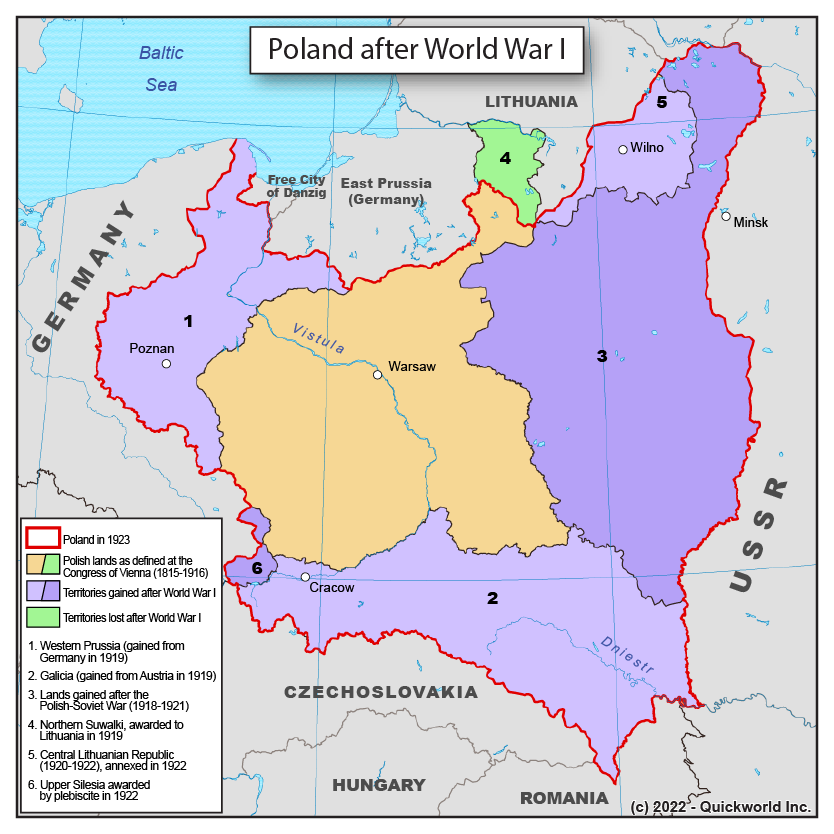The modern history of Poland is one of resurgence after many years of submission to foreign powers. After the partition of the Kingdom of Poland at the end of the 18th Century, the former nation was split between three major empires: Germany, Austria, and Russia. World War I profoundly redefined borders in Europe, and Poland was one of the largest of the new nations established after the War.
While some traditional Polish lands were part of the Central Powers and were often experiencing forced germanisation, the largest territory was part of the Russian Empire and, following a German eastward advance during the War, was promised to become a sovereign state. The 1918 peace between Germany and Russia formally established the new Polish nation. It was globally recognized as the Polish Republic after the Versailles Treaty, and the new country was awarded traditional Polish lands that had been part of the former German and Austrian Empires.
The borders of the new nation were to change dramatically one more time. As Russia fell deeper into civil war between Bolsheviks and partisans of the monarchy, Poland fought and gained control of vast territories in Byelorussia and Lithuania, covering close to 400,000 sq. km. Resentment by their two powerful neighbours were, unfortunately, the source of major tension which culminated in the dual invasion of 1939, precipitating Europe in the chaos of WW2.
More on Poland
The Formation of Modern Poland


